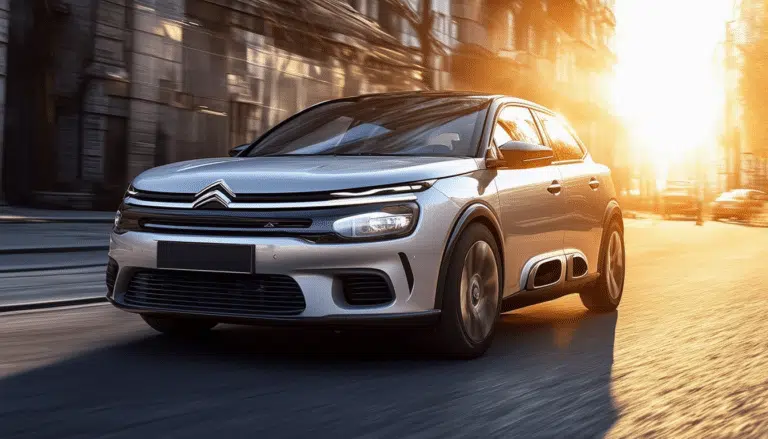Six strategies for driving efficiently and reducing fuel consumption

Efficient driving has become an urgent necessity in a world where the consumption of natural resources and pollution are critical issues. Implementing six key strategies for driving efficiently not only optimizes fuel use but also contributes to the *health of the planet*. These techniques allow drivers to make more sustainable trips, thereby reducing their carbon footprint and making smarter use of the vehicle. Adopting a more conscious and responsible driving style translates into economic benefits in the short and long term, both for the driver’s pocket and for the environment. The following strategies will help change driving habits and promote a more sustainable future.
Introduction
Driving efficiently is not only about caring for the environment but also about maintaining control over the expenses associated with fuel purchases. Through various strategies, it is possible to optimize fuel consumption, benefiting both the driver and the vehicle. Here are six keys that allow for a more effective and economical driving style during trips.
Maintain a constant speed
One of the most effective tactics for saving fuel is to maintain a constant speed on the road. According to the Directorate General of Traffic, driving between 90 and 100 km/h is the optimal pace to achieve significant savings. When a cruising speed is established, the constant starting and stopping that requires more energy is avoided. It would be equivalent to keeping a swing in motion: the most relevant energy is spent on starting it, and once it is in motion, less effort is needed to keep it going.
Take advantage of the vehicle’s inertia
Proper use of high gears also contributes to reducing fuel consumption. When driving in higher gears, the engine operates at lower revolutions per minute (RPM) to reach the same speed. Additionally, taking advantage of the vehicle’s inertia on downhill slopes allows for energy savings, avoiding unnecessary accelerations.
Route planning
Route planning before leaving also plays a crucial role in saving gasoline. Knowing traffic conditions and road conditions helps avoid congested areas, which not only reduces driver stress but also minimizes excessive fuel use. Thanks to various mobile applications today, this planning process can be facilitated, saving time and money.
Proper vehicle maintenance
A good maintenance of the vehicle is essential for effective energy consumption. This includes regularly checking and changing the air filter, ensuring that the tires are properly inflated, and keeping the engine in good condition. A dirty air filter and misaligned tires can increase fuel consumption by up to 5%, directly affecting fuel performance. Additionally, performing an annual vehicle inspection can prevent major problems and unexpected expenses in the long run.
Responsible use of air conditioning
High temperatures often generate a greater reliance on air conditioning, a feature that, while convenient, can drastically increase fuel expenditure. Therefore, it’s advisable to use the air conditioning only when truly necessary and, whenever possible, look for alternatives like opening windows in urban routes where the speed is not high. On highways, using the air conditioning is more effective than having the windows down.
Reduce the weight of the vehicle
Finally, another important aspect to consider is the weight of the vehicle. Often, trunks become storage spaces for unnecessary items, accumulating objects that will not be used. An excess weight can affect fuel consumption, so it’s advisable to carry only what is necessary during trips. This not only optimizes fuel performance but also improves safety on the road.
Holidays are a time prone to car trips, where the desire to reach our destination quickly often leads us to adopt driving habits that are not the most suitable. However, implementing six strategies for efficient driving can make a significant difference not only in fuel savings but also in reducing environmental pollution.
First, maintaining a constant speed is fundamental. Driving between 90 and 100 km/h on highways is optimal for saving fuel, as it avoids sudden accelerations and decelerations that increase consumption. Additionally, using high gears allows the engine to operate at fewer revolutions, which also contributes to lower energy loss.
Caring for the vehicle is another important key. Performing regular maintenance and ensuring that tire pressure is adequate can reduce fuel consumption by 5%. It is also essential to manage the weight of the car, avoiding unnecessary loading, as each additional kilo increases the engine’s effort.
Route planning is essential to avoid congestion that may lengthen travel time and, consequently, fuel consumption. Knowing traffic and using apps that provide alternative routes can be very helpful.
Additionally, it is advisable to use the air conditioning in moderation and drive with the windows closed on highways, as this habit can help reduce the vehicle’s energy consumption. Lastly, raising awareness about efficient driving benefits not only the driver but also the community and the environment.




